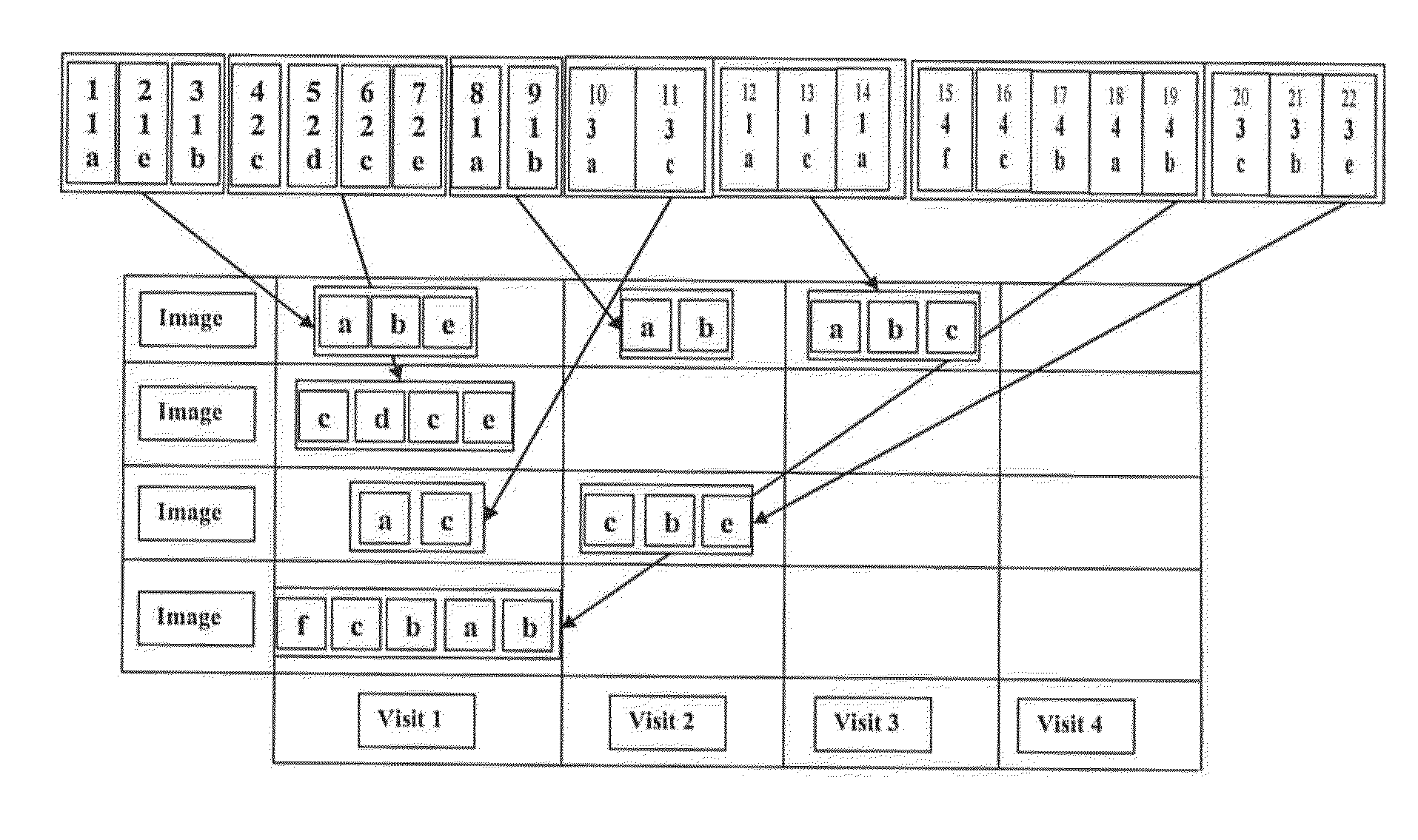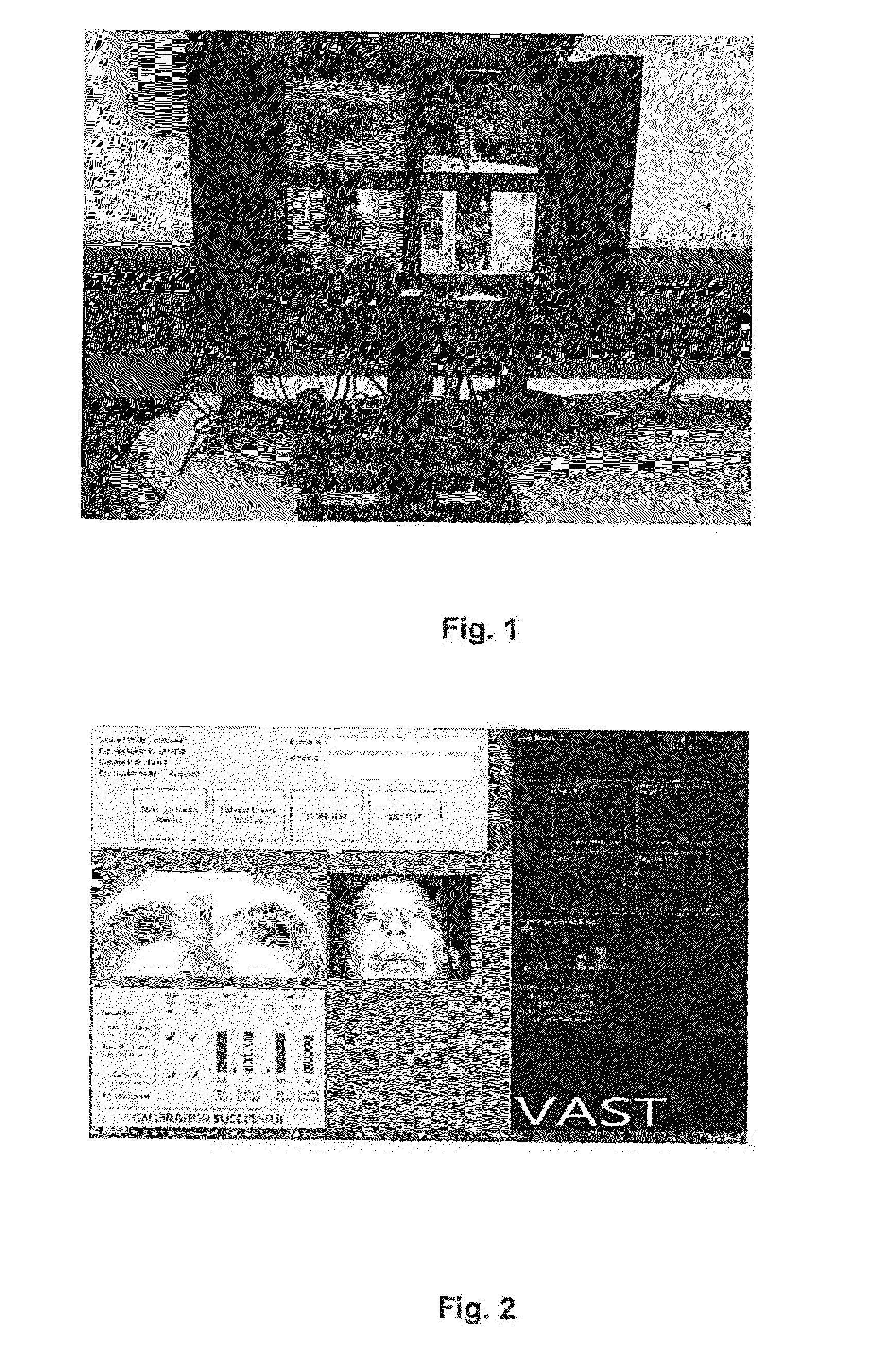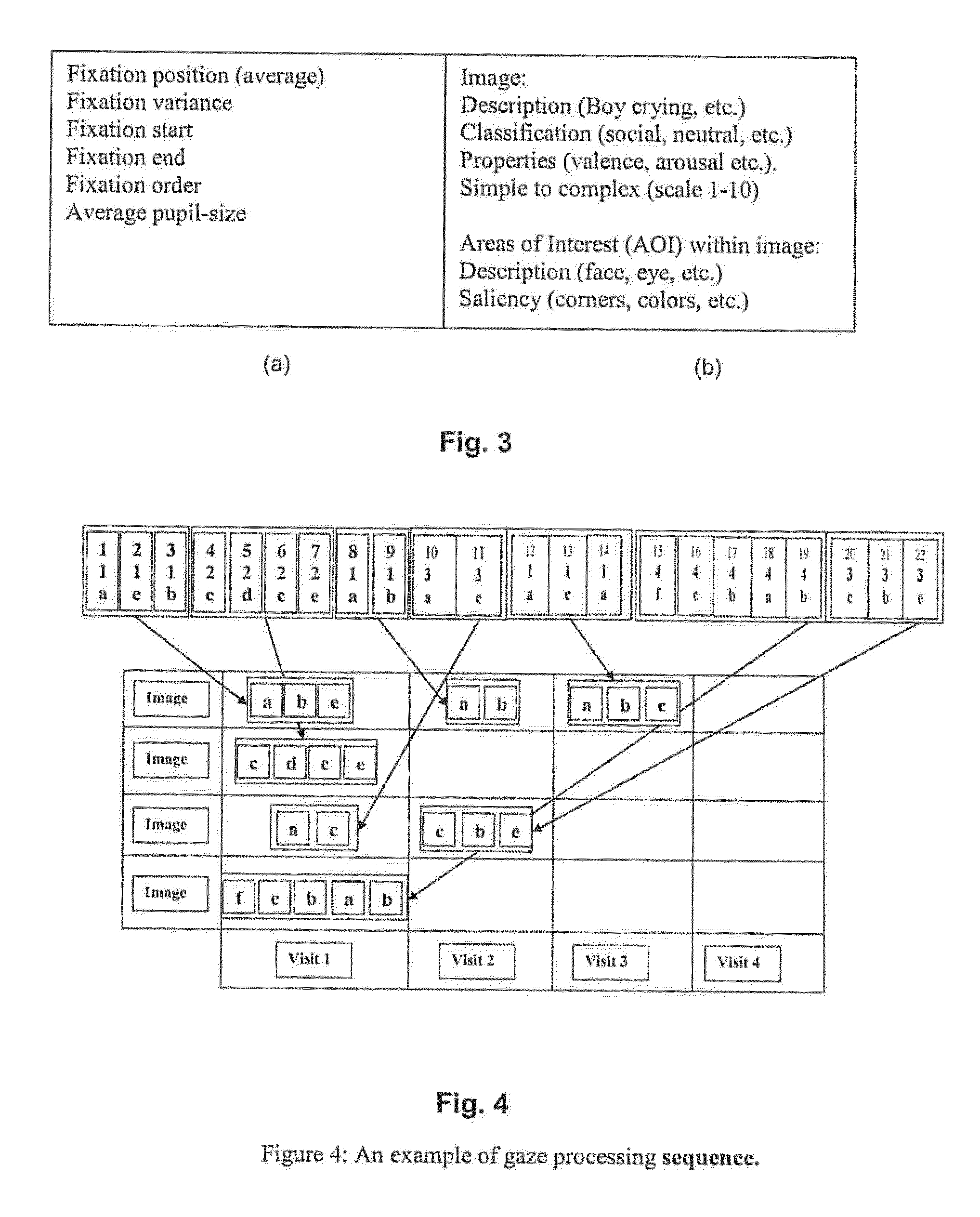Method of identifying an individual with a disorder or efficacy of a treatment of a disorder
- Summary
- Abstract
- Description
- Claims
- Application Information
AI Technical Summary
Benefits of technology
Problems solved by technology
Method used
Image
Examples
Embodiment Construction
[0032]In humans, detailed information (high resolution, colour, etc) of objects in the visual field (approximately 180°*135°) is obtained by moving the eyes so that images of these objects fall on the rod-free, capillary-free portion of the retina—the foveola—(0.3 mm, approximately 1°). During visual exploration, patterns of visual scanning are formed by successive periods of steady gaze (fixations) and rapid movements (saccades). Fixations allow areas in the subject's visual field to be viewed by the fovea, providing the visual system with high-acuity color-rich information, while less detailed information is collected by parafoveal and peripheral retinal fields. The patterns of movement (visual scanning behaviour) provide continuous records of regions in the visual field that are considered relevant by the subject.
[0033]Visual scanning behaviour (VSB) is controlled by both low-level perception processes (e.g., temporal and spatial characteristics of the visual stimuli) and high-le...
PUM
 Login to View More
Login to View More Abstract
Description
Claims
Application Information
 Login to View More
Login to View More - R&D
- Intellectual Property
- Life Sciences
- Materials
- Tech Scout
- Unparalleled Data Quality
- Higher Quality Content
- 60% Fewer Hallucinations
Browse by: Latest US Patents, China's latest patents, Technical Efficacy Thesaurus, Application Domain, Technology Topic, Popular Technical Reports.
© 2025 PatSnap. All rights reserved.Legal|Privacy policy|Modern Slavery Act Transparency Statement|Sitemap|About US| Contact US: help@patsnap.com



